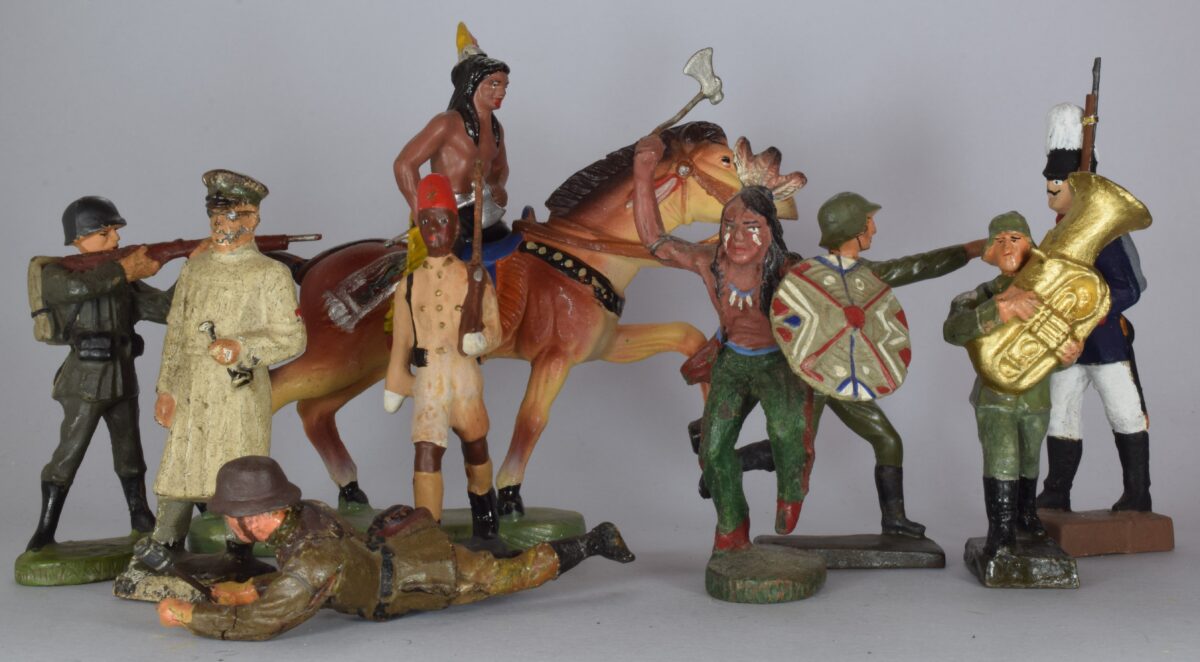Composition figures are made of a mixture of sawdust, glue, kaolin and cassein (Joplin). This mixture was put in a mold around a wire armature. The figures were sold painted.
Categories
Composition Figures


Composition figures are made of a mixture of sawdust, glue, kaolin and cassein (Joplin). This mixture was put in a mold around a wire armature. The figures were sold painted.